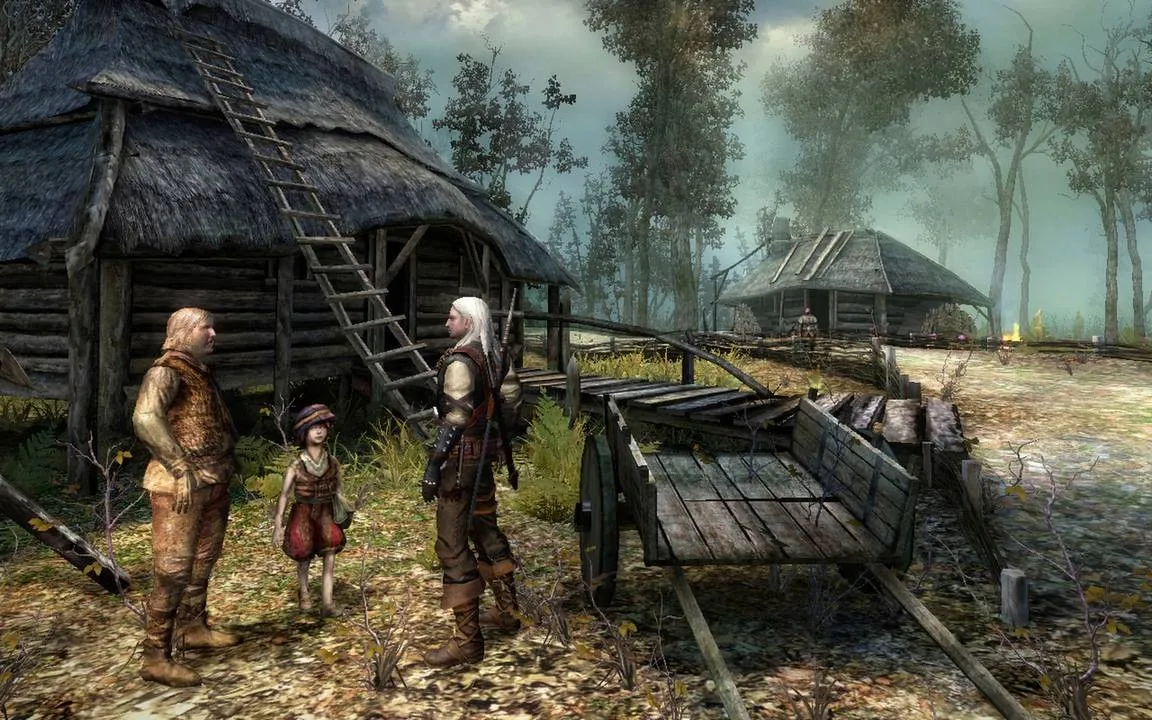
The Witcher: A Unique RPG Experience
Contents
The RPG genre was once trapped in a predictable loop, dominated by frantic hack-and-slash titles like Diablo or classic Dungeon & Dragon-inspired adventures. While some games attempted to break this mold, few achieved widespread success, often relying on big budgets and established developers. The Witcher, adapted from Andrzej Sapkowski’s novels, emerged quietly but achieved unexpected acclaim, offering a fresh perspective on the RPG genre.
A World of Choice and Consequence
The Witcher presents a captivating world, distinguished by its morally gray narrative. There is no clear good or evil, only choices and consequences. This philosophy, pioneered by CD Projekt RED, paved the way for the series’ continued success. Players embody Geralt of Rivia, a witcher, and navigate complex conversations laden with nuanced implications. Each decision, shaped by individual interpretation, has lasting ramifications, with the true weight of these choices revealed only as the story unfolds.
 A screenshot from The Witcher showing Geralt in a conversation.
A screenshot from The Witcher showing Geralt in a conversation.
The world is populated with diverse characters, spanning the social spectrum from the impoverished to the wealthy elite. Each character’s personality reflects their social standing, showcasing a range of flaws and virtues. Players encounter cowardly misers, belligerent drunkards, and a host of other individuals, each with their own hidden stories that contribute to a rich and believable world. Geralt, far from a traditional hero, is a monster hunter motivated primarily by coin. This pragmatic approach is reflected in the game’s structure, which features engaging side quests alongside the main narrative, including lucrative monster hunts that highlight Geralt’s mercenary nature.
Innovative Combat and Character Progression
The Witcher distinguishes itself with its unique combat system, avoiding the tactical complexity of Dungeon & Dragon games and the button-mashing of Diablo. Success in combat hinges on precise timing. Well-timed clicks unleash devastating combos, with damage escalating with each successive chain. Mindless clicking, however, leaves Geralt vulnerable to counterattack.
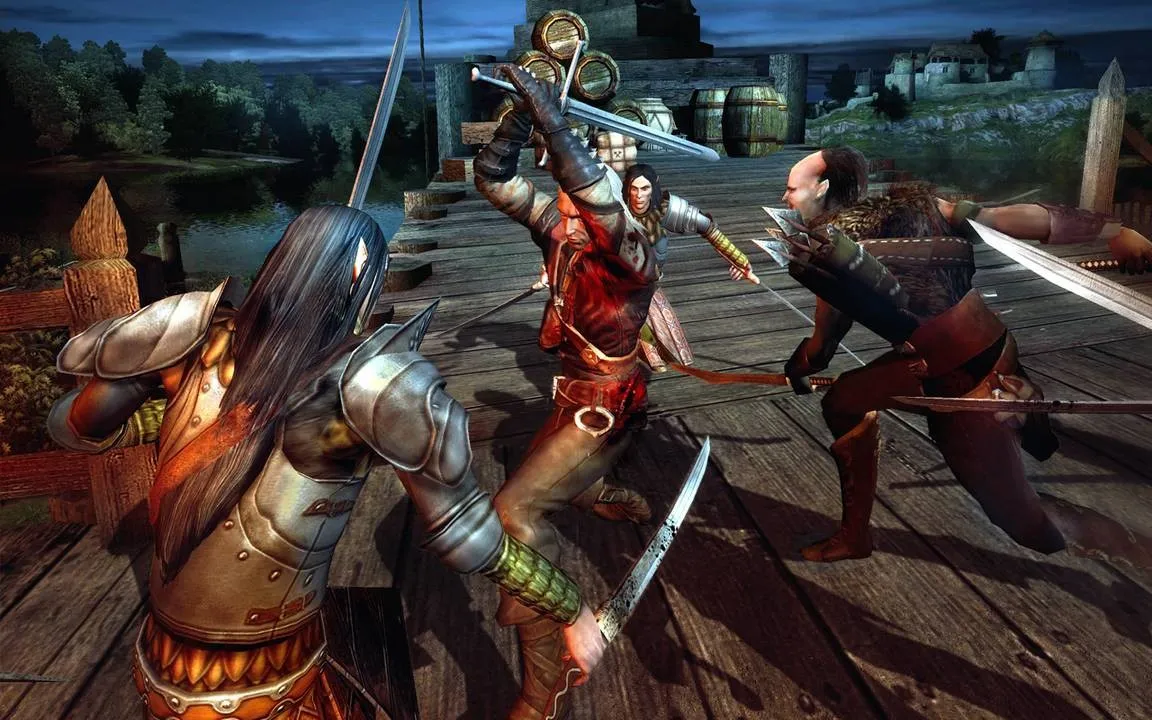 Geralt fighting a group of drowners in The Witcher.
Geralt fighting a group of drowners in The Witcher.
Geralt employs three distinct combat styles: Strong, Fast, and Group, each tailored to different enemy types. Strong style overpowers larger foes, Fast style counters agile opponents, and Group style handles mixed groups, albeit with reduced damage. Complementing these styles are five magical signs: Aard (telekinetic blast), Axii (mind control), Ignis (fire), Quen (protective shield), and Yrden (magical trap). Instead of traditional health potions, Geralt meditates to consume “potions” that enhance his abilities, but each carries a toxicity level, requiring careful management. Mastering these elements is crucial for survival against both human and supernatural threats.
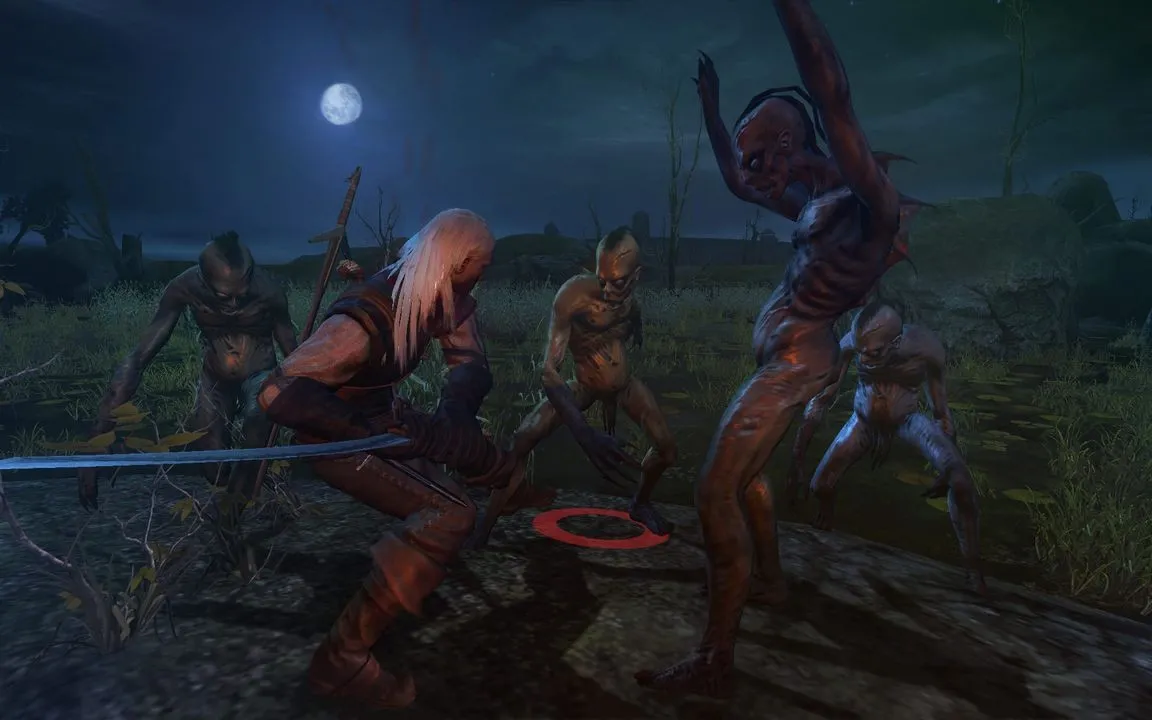 Geralt using the Igni sign against a monster in The Witcher.
Geralt using the Igni sign against a monster in The Witcher.
Character progression adds another layer of depth. Players allocate points across four branches: Attributes, Signs, Steel Swords, and Silver Swords. Each branch offers a range of skills with further upgrade paths divided into Gold, Silver, and Bronze tiers. While initially daunting, this intricate system rewards careful planning and strategic decision-making.
Audio-Visual Presentation
Built on BioWare’s Aurora engine, The Witcher impressed with its visuals, especially for its time. While not open-world like The Witcher 3: Wild Hunt, the game offered striking environments, from sun-drenched landscapes to moonlit reflections on tranquil lakes. Detailed cityscapes, sprawling fields, and meticulously crafted interiors further enriched the visual experience.
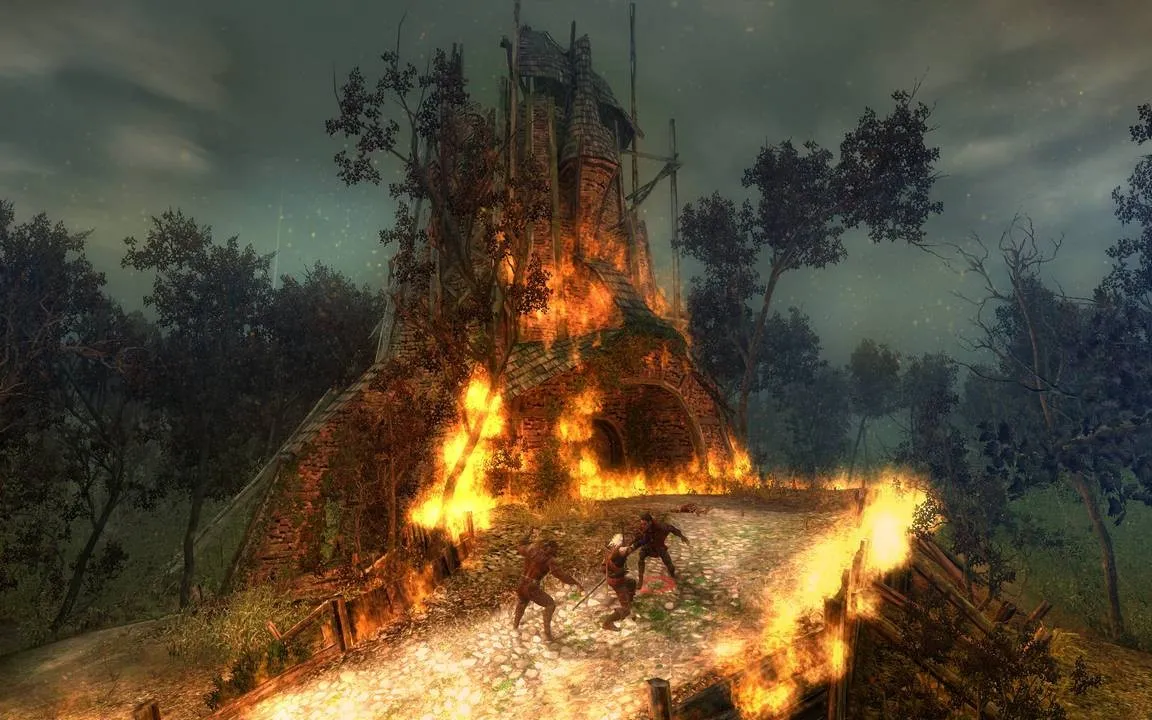 A scenic view from The Witcher.
A scenic view from The Witcher.
The audio design complemented the visuals with evocative music, immersive sound effects, and compelling voice acting. The sounds of clashing steel, ambient environmental noise, and engaging dialogue further drew players into the game world.
Technical Shortcomings
The Witcher‘s age is evident in its technical limitations. Repetitive NPC models and frequent loading screens disrupt the flow of gameplay. Occasional pathfinding issues in side quests can also prove frustrating. Furthermore, the minigames, while initially engaging, quickly lose their appeal.
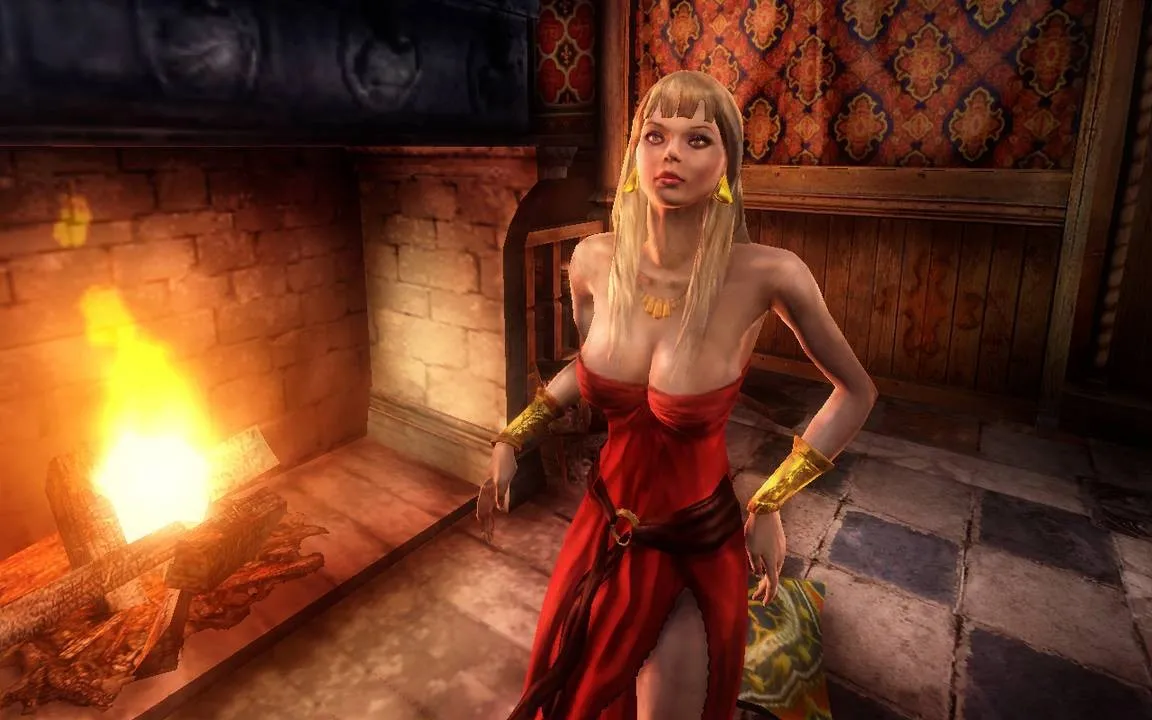 Geralt fighting a monster in a dark environment.
Geralt fighting a monster in a dark environment.
Conclusion
Despite its flaws, The Witcher remains a unique and compelling RPG experience. Its innovative combat, morally ambiguous narrative, and rich world-building laid the foundation for the critically acclaimed sequels. While its technical limitations are apparent, The Witcher offers a distinct and memorable journey for those seeking a departure from traditional RPG tropes.





Comments (0)